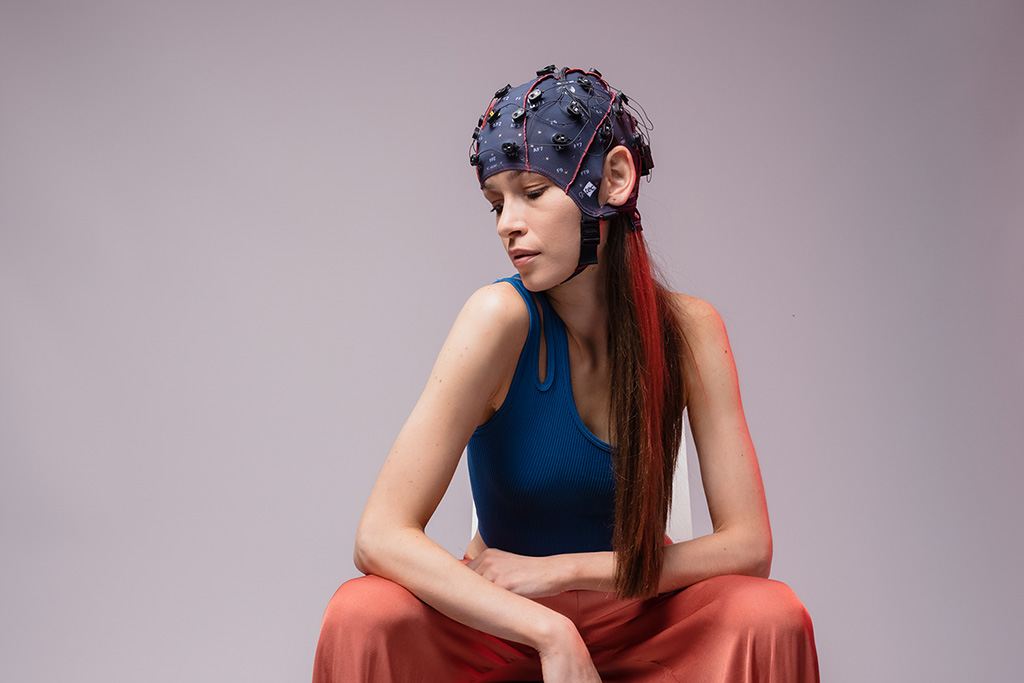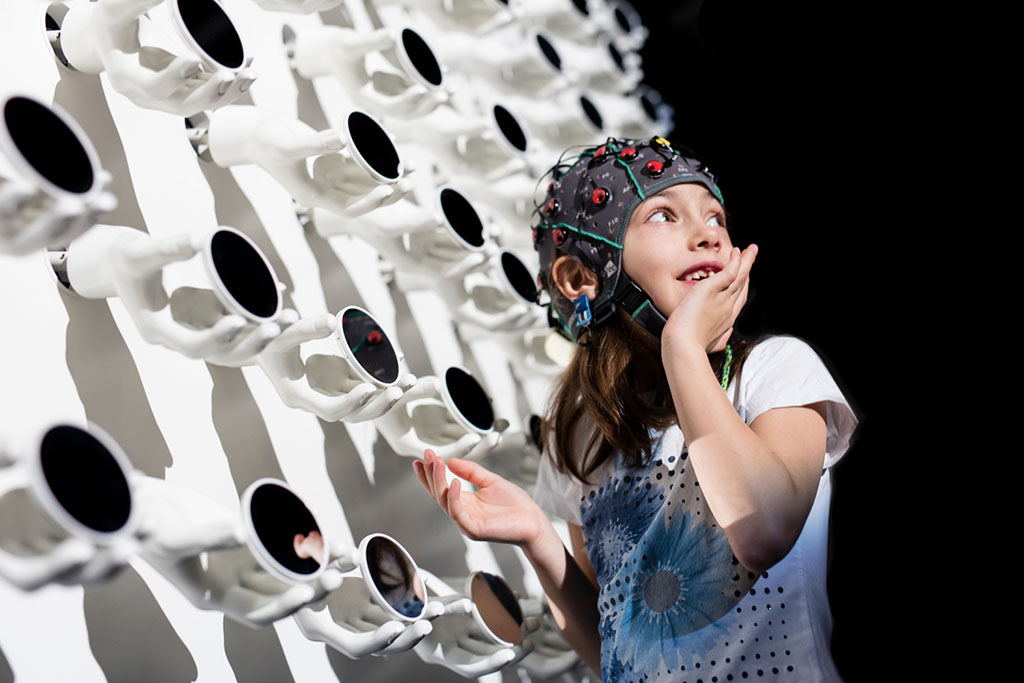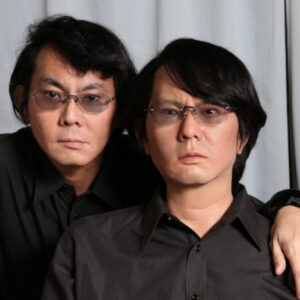
g.Nautilus RESEARCH is a wearable EEG headset for research applications only. This means that it’s less expensive and intended to be used for neuroscience research only. It comes with flexible cables to configure the EEG electrode positions as you wish. A hybrid (dry and wet) EEG electrode version and a gel EEG electrode version with 8/16/32/64 EEG channels are available for any kind of neurological and neuroscience research.
| 64/32/16/8 g.SAHARA hybrid EEG electrodes for dry or wet recordings |
| 64/32/16/8 g.SCARABEO gel based EEG electrodes |
| Flexible EEG electrode positioning |
| g.GAMMAcaps for kids and adults available |
| 24 bit accuracy at 250/500 Hz sampling rate (8/16/32 channels), use only one device in one room with 500 Hz |
| 24 bit accuracy at 250 Hz sampling rate (64 channels) |
| 6 hours (64 channels), 10 hours (8, 16, 32 channels) continuous recording and 2-3 hours charging |
| 2.4 GHz digital transmission, range: 10 meters indoor |
| A new benchmark in usability |
| The only wearable headset with active EEG electrode technology |
| Unique internal impedance check for g.SCARABEO electrodes |
| Waterproof device with contactless charging |
| Full software environment available |
| To be used for research applications only |
| Combine g.Nautilus Research with g.SENSOR fNIRS to record EEG and fNIRS with a single head-set |
| Weight | < 140 g without electrode grid (64 channels) < 110 g without electrode grid (8, 16, 32 channels) |
| Size | 78 (L) x 60 (W) x 36 (H) mm (64 channels) 78 (L) x 60 (W) x 26 (H) mm (8, 16, 32 channels) |
| Color | Black |
| Sensitivity | ±2.25 V, ±1.125 V, ±750 mV, ±562,5 mV, ±375 mV, ±187.5 mV (software selectable) |
| Interface | Wireless 2.4 GHz ISM band |
| Digital inputs | 8 digital trigger inputs at Base Station |
| Supply | Built-in lithium ion battery, runtime > 6 h with 64 channels (> 10 h with 8/16/32 channels), inductive charging according to the QI standard of the Wireless Power Consortium |
| Amplifier type | Real DC coupled |
| 64 × ADC | 24 Bit (1.024 MHz internal sampling per channel) |
| Noise level | < 0.6 µV RMS between 1 and 30 Hz (at highest input sensitivity) |
| Input channels | Up to 64 mono-polar / 32 bi-polar channels with GND and REF (software selectable) |
| Input impedance | DC > 100 MOhm |
| Safety class | II |
COMBINED EEG AND fNIRS RECORDINGS
g.Nautilus Research in combination with g.SENSOR fNIRS enables simultaneous recordings of EEG and fNIRS (functional near-infrared spectroscopy) signals. In combination with g.tec’s active EEG electrode technology, researchers get top-quality EEG recordings from 64/32/16/8 g.SCARABEO EEG channels and 8 fNIRS channels within a few minutes.

AUTOMOTIVE RESEARCH
g.Nautilus Research is easy to set up, wearable and provides high-quality recordings despite movements or noisy environments. It is a perfect match for EEG recordings in cars, airplanes, flight simulators and even high-gravity simulators for pilots and astronauts. The wearable EEG headset can be used for Virtual Reality (VR) experiments too to increase embodiment. g.Nautilus Research also works perfectly with eye-trackers and video cameras to record electrophysiological parameters for neuromarketing applications.

SPORTS SCIENCE AND MEDICINE
g.Nautilus Research wearable EEG headset is lightweight and highly robust to motion or real-world environments. The brain activity recording device weights about as much as a climbing carabiner and has a very small packaging. g.SAHARA hybrid active EEG electrodes are well suited for remote locations e.g. high-altitude medicine because it does not require any hair washing. g.SCARABEO active wet EEG electrodes provide very good signal quality with less artifacts in the data. This is crucial for e.g. sports applications that require jumping and running.

ROBOT CONTROL
The Serbian Artist Dragan Ilic equipped a KUKA robot with hundreds of pencils to create numerous artworks. Dragan used a g.Nautilus wireless EEG device to select different drawing commands with his mind. These commands have been transmitted to the robot which then carried out the drawing commands at a wallpaper. The production of these artworks have been performed during the Ars Electronica Festival in Linz, where thousands of visitors could watch the robot drawing. The high-resolution EEG headset with 64 channels enables exoskeleton control with the following BCI principles: Motor Imagery, P300 and SSVEP.

UNLIMITED POSSIBILITIES OF WEARABLE EEG
Wearable EEG headsets and biosignal acquisition devices are becoming increasingly important in medical and clinical environments since more and more studies are conducted in the field instead of the lab. The tiny and lightweight biosignal amplifier is attached to the g.GAMMAcap to avoid cable movements and to allow completely free motions. In combination with g.SAHARA hybrid active or g.SCARABEO active wet EEG electrodes, users get top quality EEG recordings from 8/16/32/64 EEG electrodes.

WEARABLE EEG HEADSETS FOR KIDS
g.Nautilus Research opens up many new research areas that were not possible because of its mobility. For example, it can be used easily on children. The wearable EEG headset sits comfortably and stable on the kids’ heads, even though they run and move a lot. EEG headsets of a lower-quality generate a lot of motion artifacts.

SIGNAL QUALITY COMPARISON TEST
The Frontiers article from Thea Radüntz showed that g.Nautilus Research with g.LADYbird active EEG electrodes and g.SAHARA active dry EEG electrodes offer the best brain signal quality. These results outperform other wearable EEG headsets on the market. The number of artifacts in the EEG signals during resting state recorded from several wireless EEG headsets have been compared in this article.

“We have several ongoing studies. One of these studies is to extend human arm control to new approaches that control more than two arms with the help of brain-computer interfaces.”
Hiroshi Ishiguro, PhD - Intelligent Robotics Laboratory, Japan
“g.Nautilus wireless EEG amplifiers allow us to investigate freezing of gait in Parkinson’s disease, a dangerous symptom for the aging population as it can lead to falls. We can synchronize the EEG signals with VICON motion capture data seamlessly, without adding extra burden on our patients such as backpacks, or wired in hardware following them.”
Aysegul Gunduz, PhD - University of Florida, USAGET YOURS
Select amplifier
Select accessories
Select software
START RECORDING
SET CONFIGURATOR



NEED MORE INFORMATION
ABOUT THIS PRODUCT?
Send us your email so we can contact you as soon as possible.










